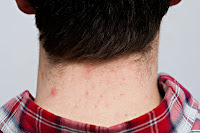What can a nape reveal about a person?



 As a result people, since the 1840s and 1850s, have been encouraged to read portraits using physiognomic information, which instigates the dangerous process of stereotyping. The procedure of making an object, or informative landscape, of the body created topological images that could be easily arranged into ‘types’. This style of deadpan photography was suited to, and subsequently used by, the police force to measure the physiognomic criminal body against that of an ‘average’ person.
As a result people, since the 1840s and 1850s, have been encouraged to read portraits using physiognomic information, which instigates the dangerous process of stereotyping. The procedure of making an object, or informative landscape, of the body created topological images that could be easily arranged into ‘types’. This style of deadpan photography was suited to, and subsequently used by, the police force to measure the physiognomic criminal body against that of an ‘average’ person. 




By focusing on depersonalizing the nape, the back of the neck, rather than the face I have moved away from the historical and instilled methods of physiognomic documentation. The nape can be hidden with hair, bared, shaved, wrapped in clothes and even painted but when objectified can the borderland between body and brain also reveal insightful truths about a person’s nature?





















No comments:
Post a Comment